This rifle is all matching except for the cleaning rod. The muzzle is threaded and the rear receiver bridge is drilled & tapped
for diopter sights though none were ever mounted as witnessed by the lack of any marks on the blueing.
As you study these photos try and inspect for the various useage marks and other detractions in condition.
I'd rate this rifle at "good+" overall. Maybe some would say a "low very good". I don't use "low" or "high" in
conditions. It either is or it isn't but then again the + or - pretty much means the same thing. In today's market
it may rate as "very good" condition.
The bore disc rates a #3 and the bore has noticeable wear in the breech end for 6 to 8 inches. Though it still shoots
quite good this degree of wear would also detract from value in most cases. Personally, I wouldn't let the worn bore
keep me from buying this rifle if the price was right...the key to all life's decisions.
The fact of the matter is this rifle cost $39.95 in 1987.

To the far left in the photo directly behind the upper receiver tang is a
hairline crack in the wood. This crack is the result, mostly, of insufficient clearance
between the receiver tang and the stock that gets battered during recoil.

There's a slight warpage of the handguard creating a small gap between the
handguard and the stock. Nothing to be done with that.

The "valley" in the handguard between the receiver ring and the rear sight
are nice and sharp revealing that this stock hasn't been refinished since it was
made in 1919.

Bedding between the receiver and wood is tight. No gaps.

There's a hint of the original fire blue on top of the ejector box and the ejector box
screw. You can also see that there's never been a diopter sight installed
on this rifle. The tang crack is more evident in this photo.

Some minor signs of use in the stock but overall not bad at all.

Look close and you can see the scraper marks in the finger grooves from the
day it was made in 1919. The handguard warpage is uniform on both sides.

That area to the right of the disc isn't damage. It looks like congealed linseed oil.

Rear triggerguard bedding is nice, tight. The screwhead shows use.

No gaps in the bedding.


Buttplates were fitted individually to stocks. You can see file marks on the edge of the buttplate.

Very nice buttplate fit. No evidence of refinishing.

Excellent remaining blue on the barrel. Many will have a low percentage of remaning blue in this area.

Century Arms import mark on barrel (required in the U.S. after 1968).

The aftermarket thread protectors aren't pretty but we pretty much have
to live with them.
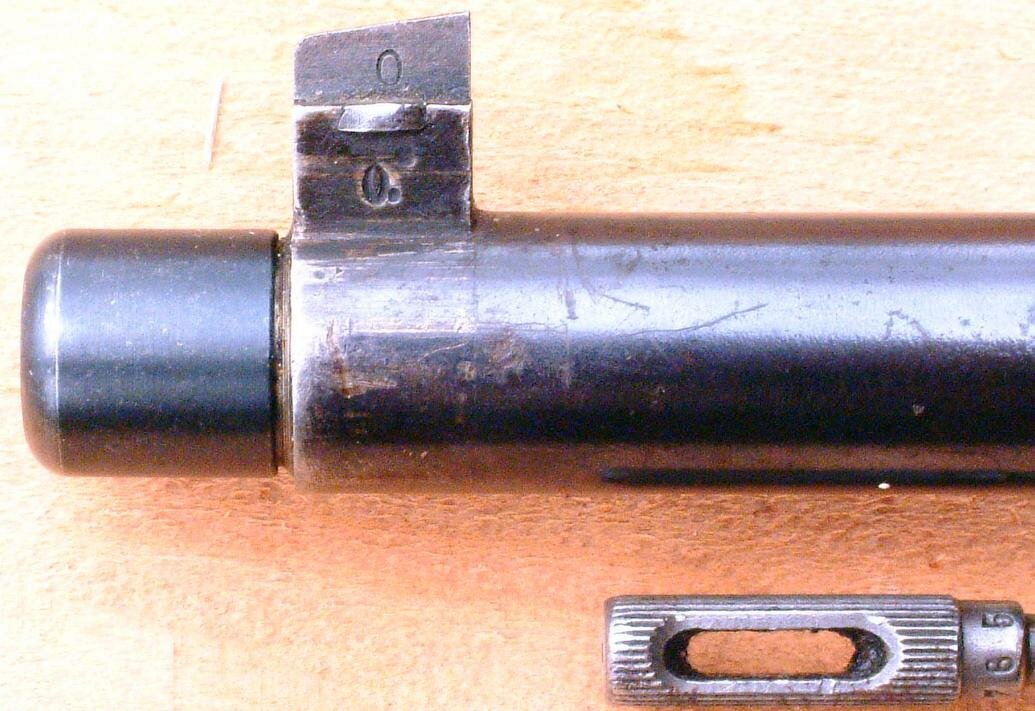
Evidence of use around the muzzle. Cleaning rod numbered 765.
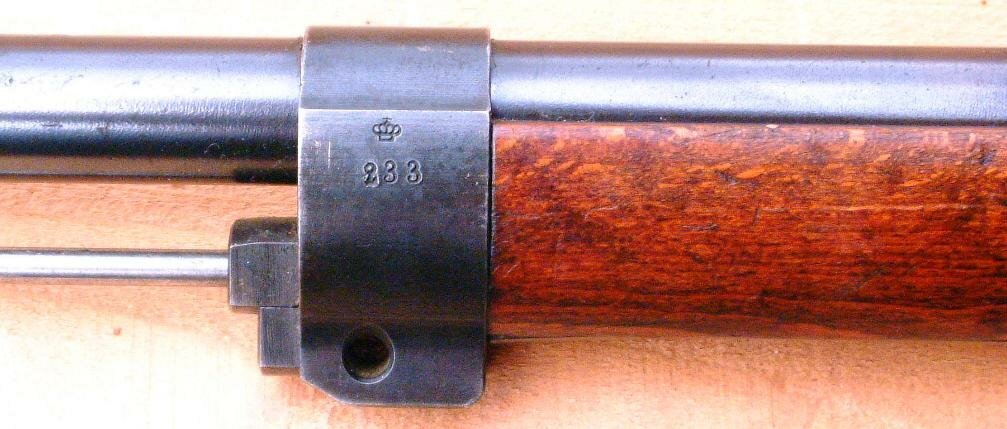


Nice flaming in the beech stock. Not a trace of damage in this view or anything that would detract from value.
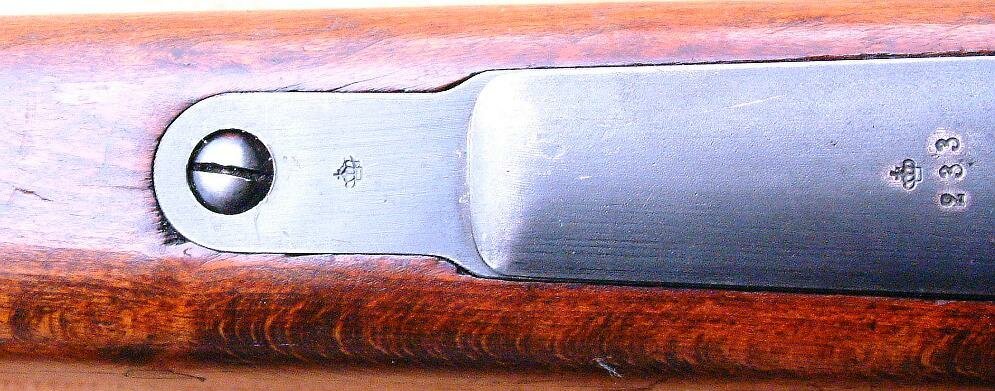
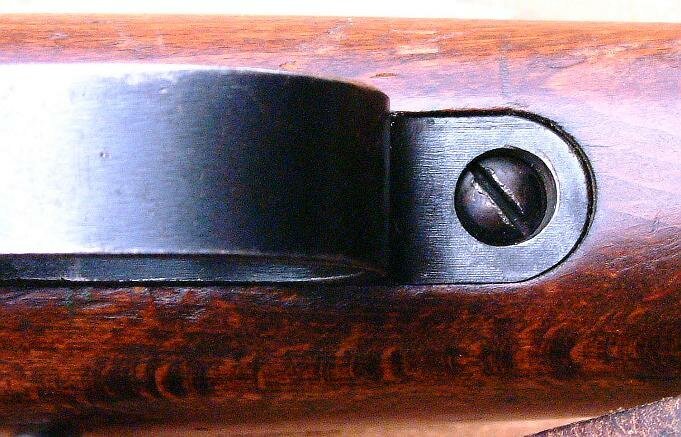
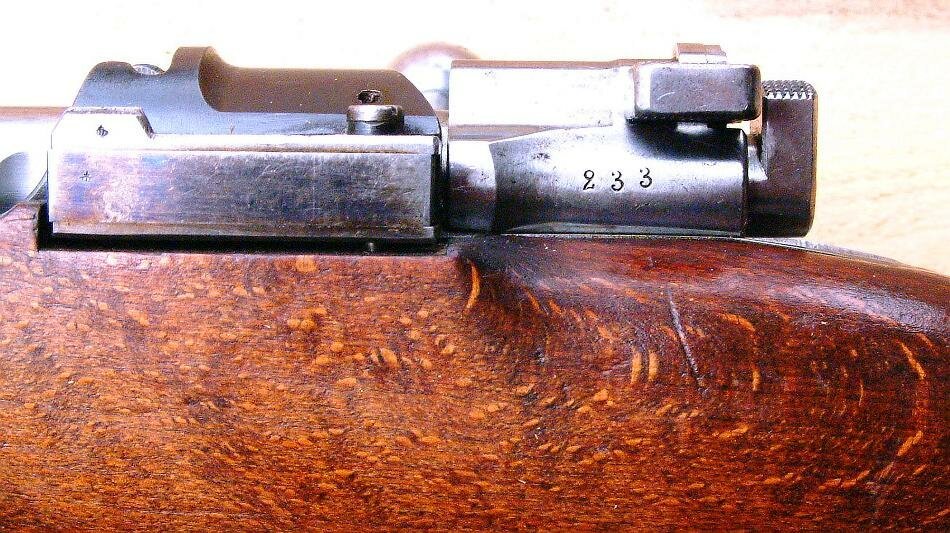
The most blue wear is on the ejector box. Notice the receiver tang is inletted nicely into the wood.

The rear sight base spring has its original fire blue. This is another indicator that the rifle hasn't been refinished. Not a hard rule though.
This simple item is a positive attribute to a collectable rifle.